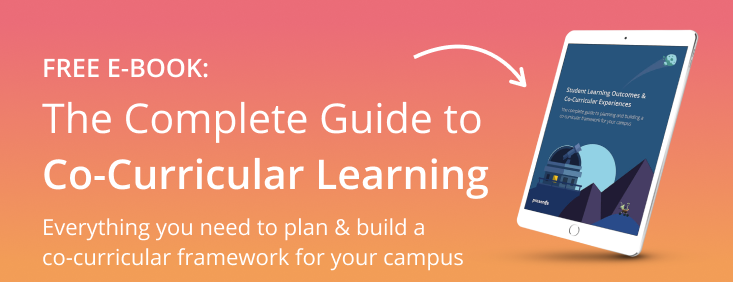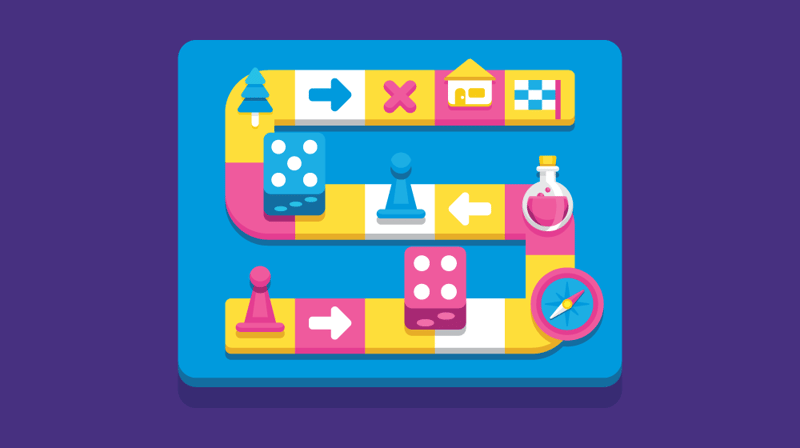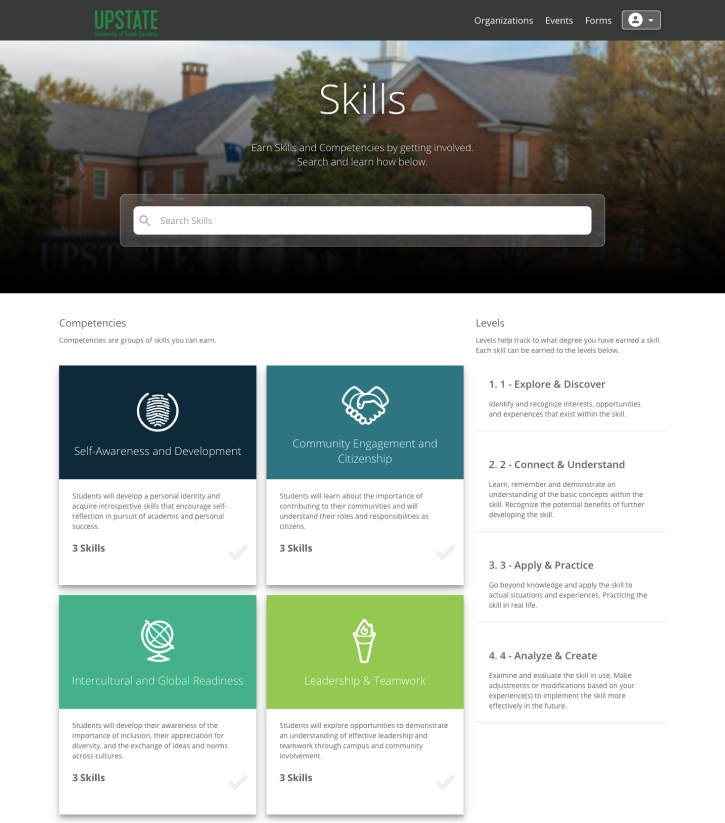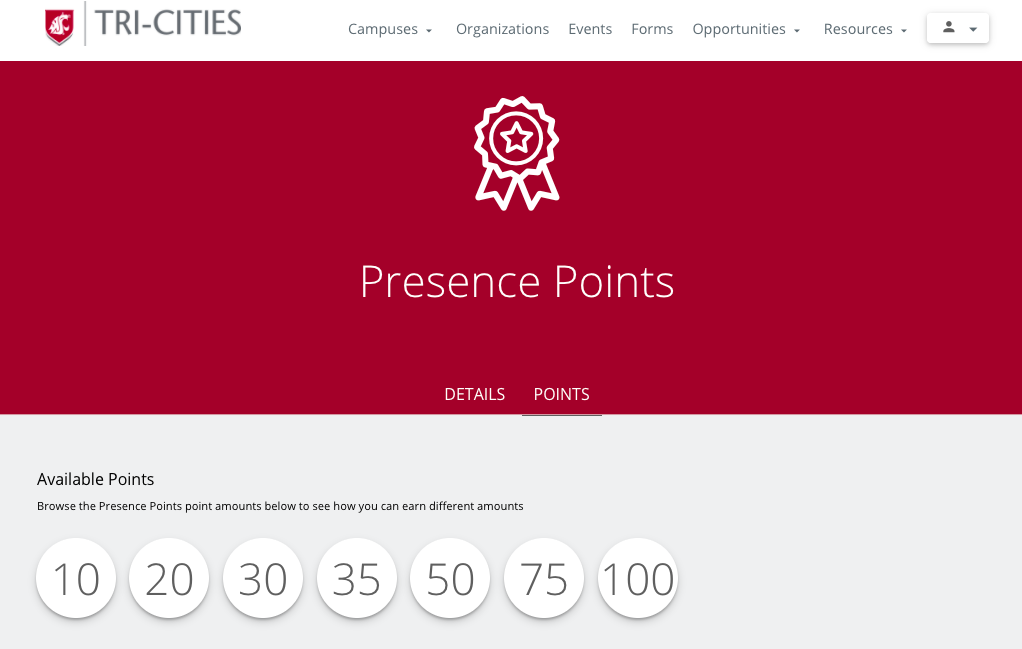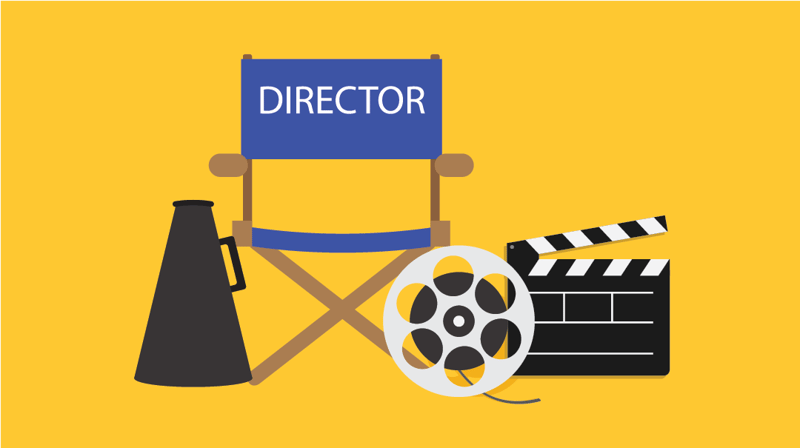Learning outcomes should be the guiding lights for all your individual campus events, ongoing initiatives, and everyday student interactions.
Learning outcomes are different from basic programming goals. They define the what of student development — what skills, lessons, and knowledge sets you want students to acquire and grow within. Outcomes tell your students what they’ll learn outside of the classroom, inform institutional higher-ups of what your programs are all about, and even tell employers what’s so special about your recent graduates.
But in order for your students, staff, and campus to truly reap these benefits, you need an overarching learning outcomes framework. Merely slapping on a few random learning outcomes to each program, which you claim students will be able to quickly master, won’t do the trick.
A student can’t acquire a long-lasting, sustainable skill from a one-hour discussion or single day of leadership training, no matter how fantastic the program is. Developing a new skill takes practice. It takes repetition and endurance, with multiple opportunities for students to learn, do, and self-reflect on throughout their time at your institution.
In other words, learning outcomes require intentional, interconnected experiences. Think learning pathways, not individual stops. You can empower students to meet your learning outcomes by designing programs that complement and build off of one another. A diverse combination of campus experiences should gradually challenge students to progress along six levels of learning, which — according to Bloom’s Taxonomy — are: remembering, understanding, applying, analyzing, evaluating, and creating.
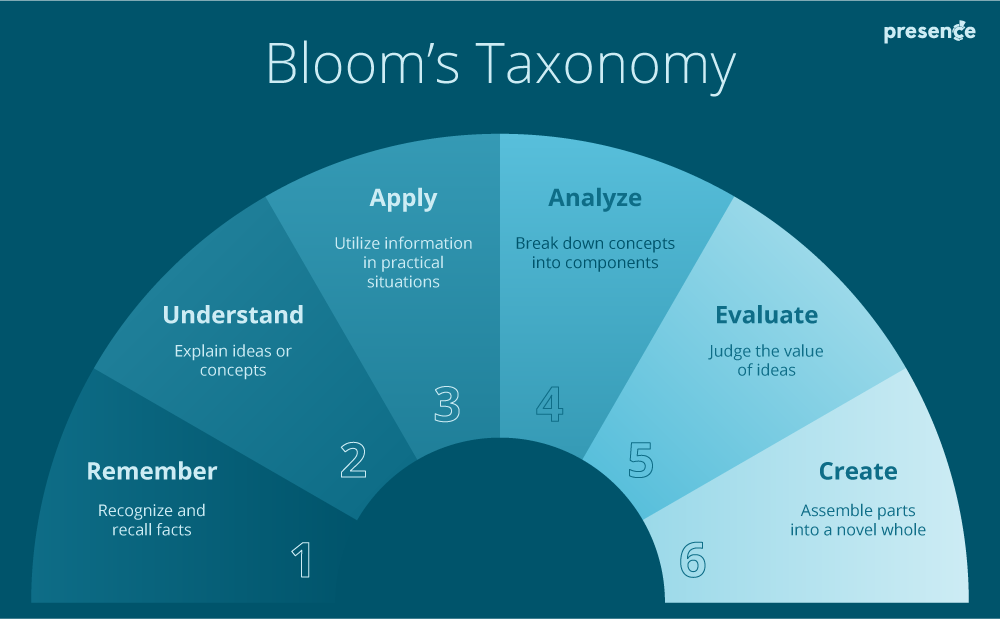
That’s where frameworks come in. By utilizing a learning outcome framework, you can build connections between programs. Students won’t just attend random programs and hope to pick up scraps of learning along the way; they’ll be guided to slowly-but-surely advance their learning through holistic experiences.
The Benefits of Frameworks
Informational voice: But wait, there’s more!
Additional benefits of learning outcomes include:
Mission alignment
You can (and indeed should) pick learning outcomes that align with your institutional mission, values, and vision. That way, you can combat the notion that student affairs only provides students with frivolous fun, served up as pizza parties. You can showcase, to both students and to institutional leadership, how co-curricular programs support — and advance — your mission!
Many schools have already done this. For example, The University of South Carolina Upstate says in its mission that it “strives to prepare its students to participate as responsible citizens in a diverse, global and knowledge-based society.”
So, its student affairs team picked community engagement and citizenship as core learning outcomes., Upstate students will “learn about the importance of contributing to their communities and will understand their roles and responsibilities as citizens” thanks to co-curricular programming.
The University of South Carolina Upstate’s Co-Curricular Competencies
And Ferris State University’s vision of fostering “opportunity, discovery and professional preparation for a dynamic global society” inspired the career readiness learning outcome.
Assessment
Learning outcomes also allow you to assess the effectiveness of your programming — as individual events and as interconnected experiences.
You can conduct focus groups and survey students to learn if your learning outcomes were indeed met. Furthermore, you can find out how programming helped your students develop these goals. You can ask students, and examine their behavior, to better understand which activities, programs, and opportunities advance which co-curricular skills.
Joe Levy, the executive director of assessment and accreditation at National Louis University, offered additional tips for creating measurable learning outcomes here. It’s all informed by his own experience utilizing Presence to understand and boost student learning at National Louis University.
Marketing
Free pizza and university-branded prizes can be fun incentives that’ll sway students to stop by one-time programs. But that tactic loses its effectiveness when every student org and campus department tries it.
You may find it especially challenging to entice students to engage with long-term opportunities, including high-impact practices. Why should they, say, devote an hour every Thursday evening to a leadership program when they have so many course assignments, internship applications, and fraternity parties to attend to?
Well, the answer is learning outcomes; those are the “why.” They gave you clear benefits to advertise. Your fliers, social media posts, and personalized emails can tell students exactly what skillsets you intentionally designed each program to help them acquire. The University of Chicago Harris School of Public Policy has done exactly that, leading to increased student engagement.
Do not underestimate the power of being explicit about your learning outcomes. Though advertising that a service-learning project will help participants develop the “ability to identify community needs” and “enhanced understanding of different perspectives” isn’t as jazzy or clear-cut as an ice cream party or free sweatshirt, students do value workforce skills.
Career readiness is why many students pursue higher education in the first place. A 2015 study found that 91% of students ranked “to improve my employment opportunities” as an “important” or “very important” factor in their enrollment decision.
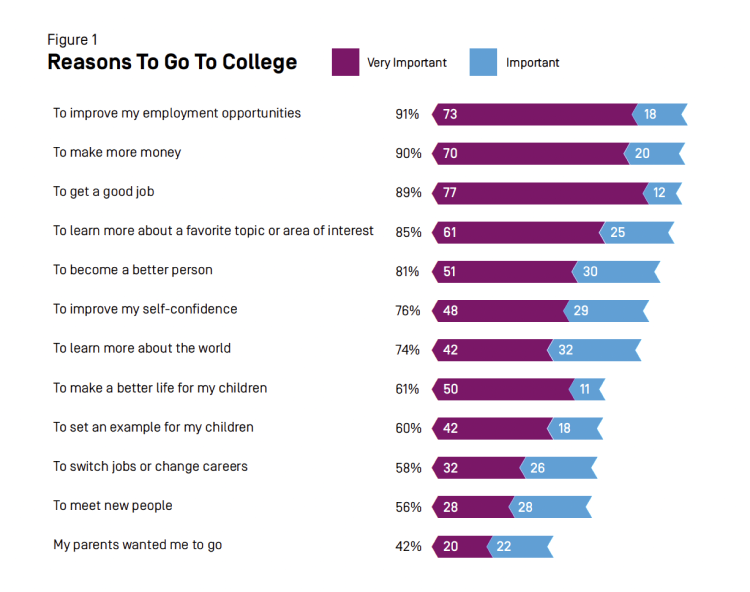
Study and image by New America
So, by showcasing learning outcomes — and connecting them to highly sought-after workplace skills — you can speak directly to students’ core motivations. You can say that co-curricular learning isn’t just a nice-to-have bonus; it’s crucial to post-graduation success.
Gamification
Clever marketing and advertising strategies may get students to show up for your programs, but it won’t keep them engaged. Gamification will.
By gamifying involvement, you’ll motivate students to think of growth less as a one-and-done and more of something that they’ll be excited to continually return to. Through Presence, you can award points after each program to signal progress towards a new skill. Students can check updates in real time, right on their automated involvement profile, allowing them to see when they are oh-so-close to advancing to the next development level.
Your learning outcome framework should serve as your guide for building out these gamified skills. Each individual outcome is like the spaces of a board game, with the framework being the design inspiration for the entire board.
For gaming inspiration, check out how Felician University awards points to students who engage in programs related to campus pride, civic engagement, holistic wellness, and more. Southern Arkansas University and Hartford Community College have implemented similar points programs.
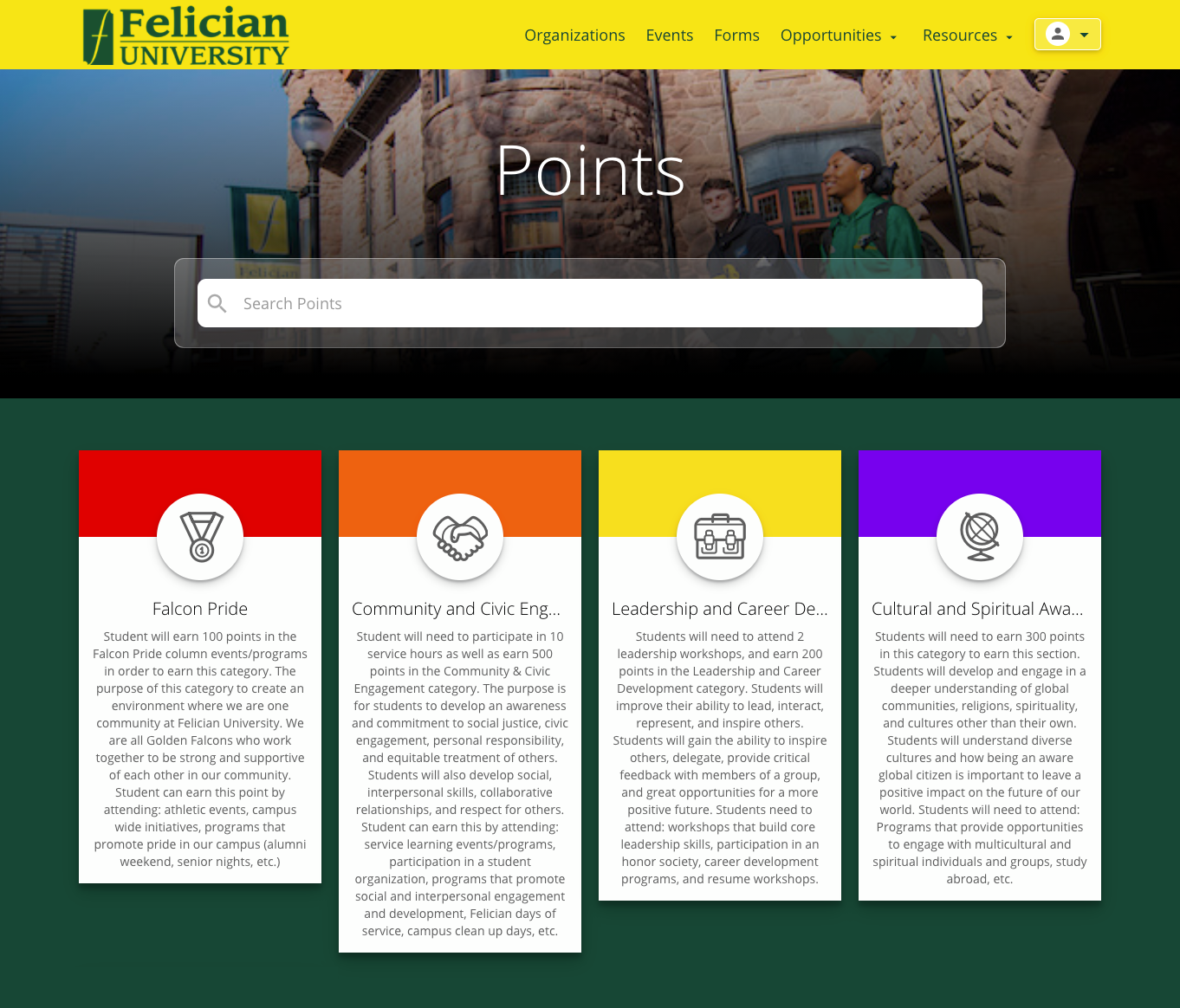
Felician University’s Points System in Presence
Washington State University Tri-Cities even uses point quantities to motivate deeper learning. Mere event attendance is worth 5, 10, or 15 points (depending on the program), whereas engaging in career services is worth up to 20 points and becoming a student org leader can score students 100 points.
Washington State University Tri-Citie’s Points System in Presence
Tri-Cities’s learning outcomes framework has directly led to guided engagement pathways! Students are motivated to engage more and more, as they learn more and more — all within clearly advertised outcomes.
Student reflection & skills articulation
Acquiring impressive skills in college means nothing if students are unable to articulate their skills to employers. Saying “I learned a lot about communication” in an interview or writing “I’m so good at community service, trust me” won’t suffice.
Employers need specifics. They need to be able to assess what communications skills an applicant has developed and what elements of civic engagement an interviewee has learned to apply.
Unfortunately, students often struggle with this articulation. They know that they’ve grown but they don’t know along what lines and why it’ll matter in their desired careers.
And who could blame them? If program facilitators just say that a service-learning program has made students “good citizens” or that an FYE leadership course will make them “capable of leading,” then students will be completely left in the lurch to self-evaluate. They’ll likely fail to even realize that their self-promotion skills are so lacking.
But, fortunately, there’s a solution, and I bet you can guess what it is. That’s right; learning outcomes can give students the language to articulate their skills to employers. By building student experiences along a learning outcome framework, and being transparent with students about each element of that framework, you’ll produce graduates who not only know their stuff but know how to talk about it!
You can even use learning outcomes to help students build co-curricular transcripts, a document that’ll talk the co-curricular talk for new alumni. Better yet, a SmartTranscript powered by Presence, will sync all of a student’s completed and in-progress experiences, certifications, points, service hours, and skills into one fully automated, live-updating profile.
In this way, learning outcomes are not only good for students and student affairs professionals; they’re also beloved by employers searching for gems among an onslaught of applicants.
Accreditation
Demonstrated achievement of student learning outcomes is a key focus of educational accreditors in their reviews.
As the Council for Higher Education Accreditation put it in its 2019 publication Accreditation and Student Learning Outcomes: Perspectives from Accrediting Organizations:
“Accrediting organizations report that they have invested considerable time in addressing student learning outcomes through accreditation standards, policies, accreditation visits and training. They have focused many of these efforts on accreditation processes: creating, applying and revising standards and policies, expanding formal guidance to address student learning outcomes and obtaining feedback from institutions and programs. Accreditors also identify student learning outcomes as playing a significant role in their formal actions (e.g., award or deny accreditation), although this role is not always determinative.”
Your institution’s academic affairs department has likely already established its own learning outcomes, which academic deans and assessment professionals gather data about in order to appease accreditors. But by establishing co-curricular learning outcomes, student affairs departments can showcase the value of the institution’s non-classroom experiences as well.
Accreditation reviews are a laborious, time-consuming process for any institution. By proactively offering a way to assist, your student affairs department can showcase its value to the institution as a whole and signal your eagerness to be part of a crucial process.
Hopefully, you’re now motivated and ready to implement a learning outcomes framework to guide co-curricular learning across your institution. Next, it’s time to build it! You can either go the personalized, DIY route or borrow from a well-established industry standard.
I’ve detailed these options for you in another blog post. Check it out here. In it, I’ve reviewed four popular frameworks, known by the acronyms CAS, LEAP, DQP, and NACE, then discussed their similarities and differences. You’ll also find advice for designing your own original framework, along with the advantages of doing so.
Still have questions? Connect with us on Twitter @themoderncampus.
